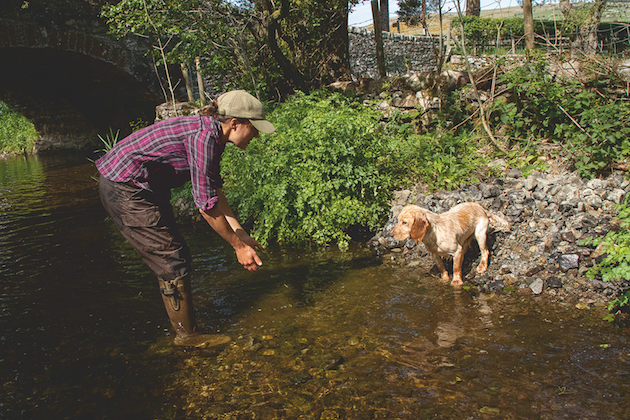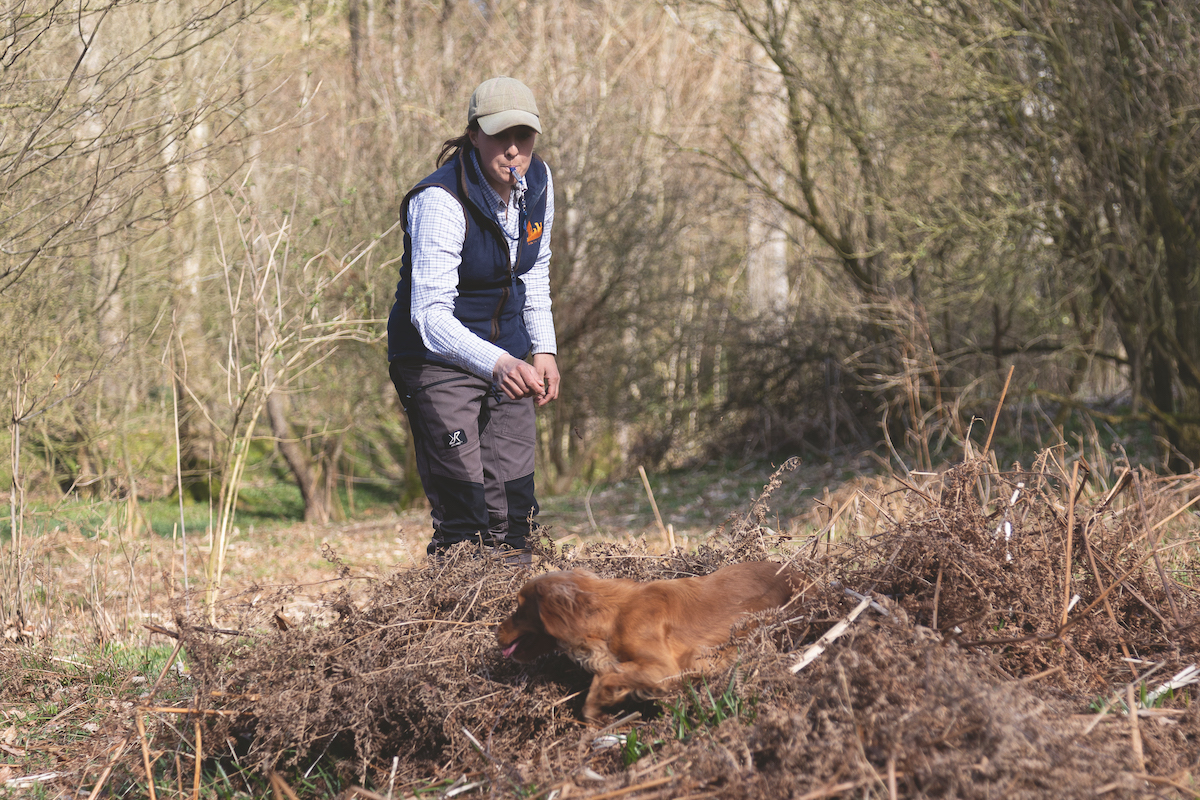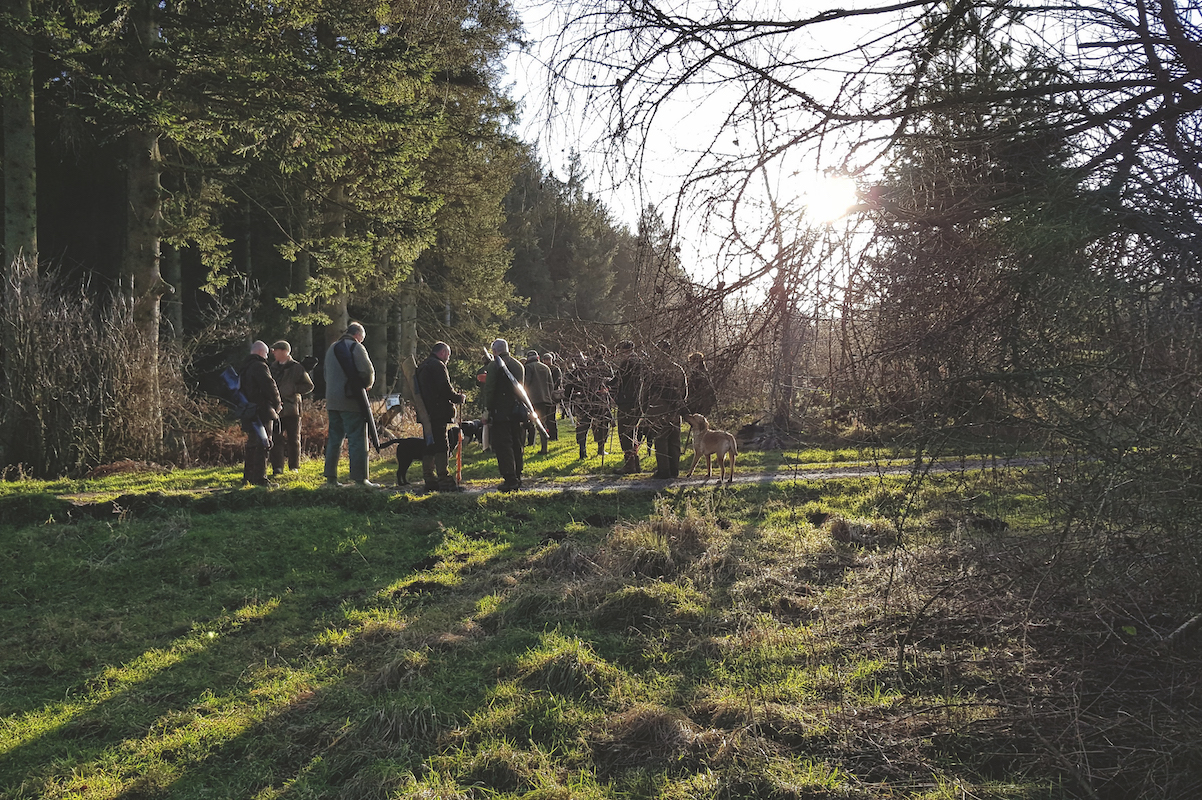How to train your gundog for water work
Fran Ardley takes the plunge and outlines the best ways to go about training your dog for water work

Some dogs can be reluctant to enter water
Gundog training for water work needs to be done carefully and with thought; it is all too easy to end up with problems such as dropping retrieves, shaking and even refusal to enter water. It is a matter of choice whether you train your dog to retrieve from water, but if you live in an area that has little or no water and it is unlikely that your dog would ever need that skill, you may think it unnecessary.
However, getting your dog to enjoy swimming has benefits. As the season draws closer, I start to swim my dogs in a slightly faster-flowing stretch of river. It is a great way of getting them fit for the rigours of the shooting field, especially as water resistance is greater than air resistance and the muscles have to work harder. I understand that for a dog, a minute of swimming is equivalent to about four minutes of running. Many field triallers are now using hydrotherapy as a supplementary form of exercise to improve strength and stamina.
Once they are used to swimming, most dogs enjoy it as well as improving their fitness. Strong, toned muscles help to protect dogs against injuries.
If you plan to pick-up with your dog or shoot over it the chances are you will need the dog to be able to retrieve from water. But I would urge caution. Always consider the conditions before sending your dog into water, especially in the winter months.

If you stand in water to accept the retrieve your dog is less likely to shake itself
Gundog training for water work – where and when
For example, a cocker with a thin coat will not cope very well with entering freezing water and then being asked to sit through a drive while soaking wet. Never send your dog for a retrieve if a river is running fast, no matter how strong a swimmer the dog is, and never ask your dog to go into a lake or pond with ice on it, you are asking for trouble.
Although it can look impressive when a dog leaps into water, beware the unseen obstacles that can cause nasty injuries. Always check to make sure there are no branches or old shopping trollies lying just underneath the water before sending your dog in. I would also advise that you do not get into any ‘competitions’ with your dog. We have all experienced it when a Gun points out that there is a retrieve in the water and all and sundry send their dogs in for it.
The best course of action in a case like this is to call your dog to heel and pop it on a lead if needs be. Getting involved in a free for all will do your dog no good at all.

A leap into water looks impressive but you should check for obstacles first
As to when you should start doing some water training, I think the answer is simply when the weather warms up and the pup is a confident retriever. You could, of course, encourage the dog have a paddle about from a young age and most dogs take to water. However, if your dog is cautious, under no circumstances force it into the water as you may well put it off for life. Patience, persistence and persuasion are the key to success.
Confidence
The first thing is to find a suitable location with water. This should ideally be a still or very slow-moving area of water and it should be a warm day. It is not a good idea to try and get your pup keen on water if it going to get freezing cold. Also, avoid steep banks with muddy or silty bottoms. These exercises are all about building up the dog’s confidence and avoiding situations that scare them.

Find a still or slow moving area of water
Encourage
Some young dogs lack the confidence to go into water, perhaps because they can’t see the bottom, and this is why it is important you find a shallow location with a firm bottom. Many handlers will try to send the dog from the bank but I prefer to don a pair of wellies and walk a few steps into the water and encourage the pup towards me. I will often have a bit of biscuit in my hand to add that little bit of encouragement. In this regard, keep your hands low and clap them.
Delivery in the water
By far the most common fault with water work is the dog dropping the retrieve when making the delivery. The way to ingrain a good habit is to initially stand in the water and call the dog back in to you. Most dogs are unlikely to shake while in the water and once your dog is doing this reliably you can move on to the next stage.

An older, experienced dog will encourage the youngster
Delivery on land
You will need to find an area where the dog can get an easy exit to the bank. Throw out your retrieve and send the dog. You need to be positioned close to the bank edge but far enough back so the dog can get on to firm ground. Once the dog is confidently coming back to you, gradually move back further away from the bank and each time ensure you give the dog lots of encouragement.
If your dog starts to drop short, move a few steps forward and work on that distance until you get a reliable delivery.
If your young dog is reluctant to enter the water, you could employ the help of a more experienced dog. First, call out the older dog; I have found that if I give the dog a bit of fuss this can create a little bit of jealously and nine times out of ten the younger dog will find that irresistible and will come in to join you. When I walk off upstream and call both dogs, the pup will more often than trot along quite happily.
Many people will use a ball when they first introduce a dog to retrieving from water. However, a ball bobbing about in the water can be hard for a dog to get hold of and they can get discouraged when they end up putting their heads underwater. I prefer to use either a “tennis ball dummy” made by Kong or one of the rubber waterproof ones. I tend to avoid canvas dummies as they become saturated and heavy.
Remember to always check the bank and water for any obstructions. You can keep your dog on a lead if needs be to enable a more controlled entry.








